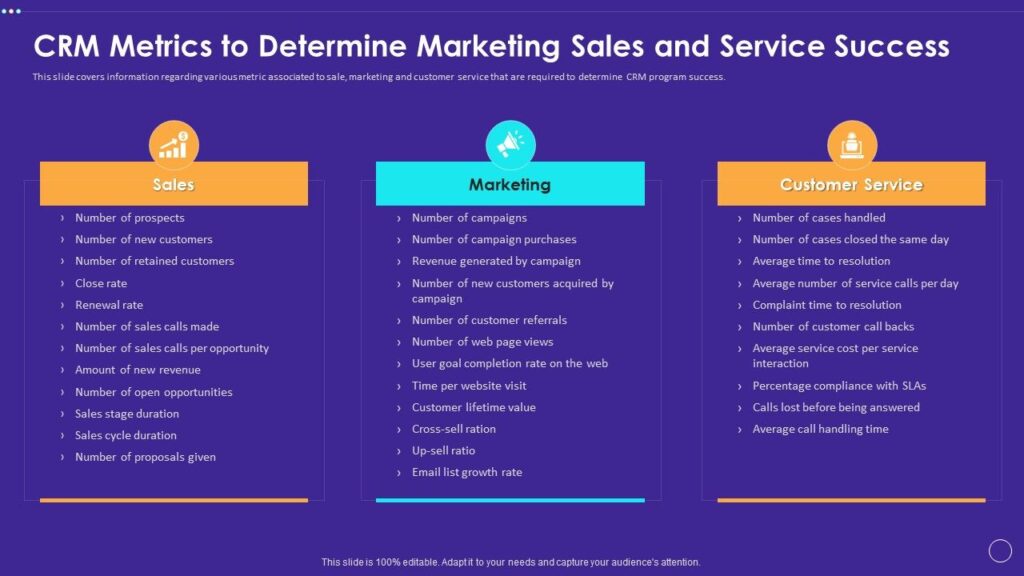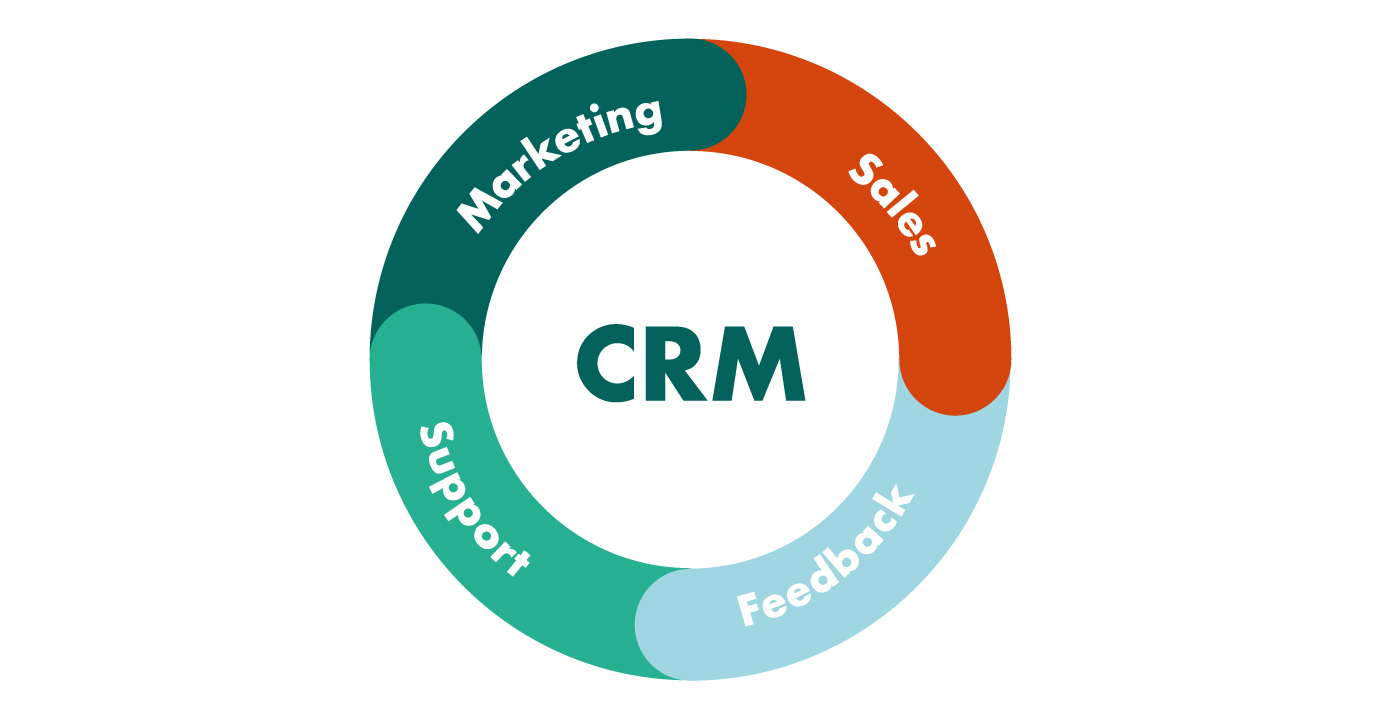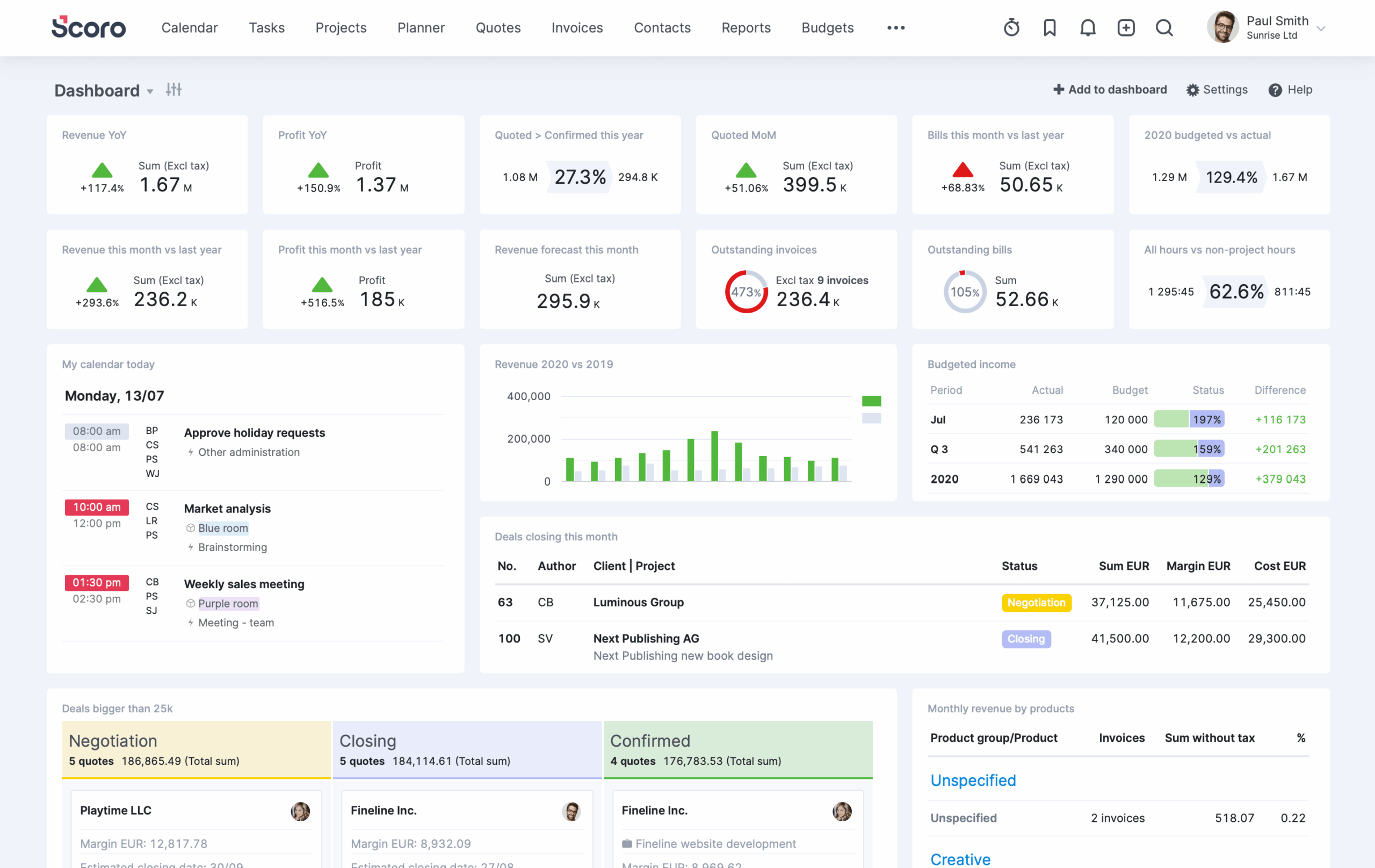
In the ever-evolving landscape of digital marketing, understanding and leveraging Customer Relationship Management (CRM) has become paramount. But simply having a CRM system in place isn’t enough; you need to know how to measure its effectiveness. That’s where CRM marketing metrics come in. They are the compass guiding your marketing efforts, helping you navigate the complex terrain of customer interactions and business growth. This comprehensive guide will delve deep into the world of CRM marketing metrics, providing you with the knowledge and tools to track, analyze, and optimize your marketing strategies for maximum impact.
What are CRM Marketing Metrics?
CRM marketing metrics are quantifiable measurements that track the performance of your marketing activities within a CRM system. They provide insights into customer behavior, campaign effectiveness, sales performance, and overall business health. By monitoring these metrics, you can make data-driven decisions, refine your strategies, and ultimately, drive revenue growth. Think of them as the vital signs of your marketing efforts.
Why are CRM Marketing Metrics Important?
In the fast-paced world of marketing, guesswork is no longer an option. CRM marketing metrics provide a clear view of what’s working and what’s not. They offer several key benefits:
- Data-Driven Decision Making: Metrics provide concrete evidence, allowing you to make informed decisions based on facts, not assumptions.
- Campaign Optimization: By analyzing performance data, you can identify areas for improvement and optimize your campaigns for better results.
- Improved ROI: Tracking metrics helps you understand which marketing activities deliver the best return on investment (ROI).
- Enhanced Customer Understanding: Metrics provide insights into customer preferences, behaviors, and needs, enabling you to personalize your marketing efforts.
- Increased Sales and Revenue: By aligning marketing and sales efforts, CRM metrics help you nurture leads, close deals, and boost revenue.
Key CRM Marketing Metrics to Track
The specific metrics you track will depend on your business goals and the nature of your marketing campaigns. However, some key metrics are universally important. Let’s explore some of the most critical CRM marketing metrics:
1. Customer Acquisition Cost (CAC)
Definition: The total cost of acquiring a new customer. This includes all marketing and sales expenses associated with attracting and converting a lead into a paying customer.
Calculation: (Total Marketing and Sales Costs) / (Number of New Customers Acquired)
Importance: CAC provides a clear understanding of how much it costs to acquire each customer. It helps you evaluate the efficiency of your marketing and sales efforts and identify areas where you can reduce costs without sacrificing results. A lower CAC indicates a more efficient customer acquisition process.
2. Customer Lifetime Value (CLTV)
Definition: The predicted revenue a customer will generate throughout their relationship with your business. It’s a crucial metric for understanding the long-term value of your customers.
Calculation: (Average Purchase Value) x (Average Purchase Frequency) x (Average Customer Lifespan)
Importance: CLTV helps you prioritize customer retention efforts and identify your most valuable customers. By understanding the potential revenue each customer can generate, you can make informed decisions about customer service, marketing spend, and product development. Ideally, your CLTV should be significantly higher than your CAC, indicating a healthy and sustainable business model.
3. Conversion Rate
Definition: The percentage of leads or prospects who complete a desired action, such as making a purchase, signing up for a newsletter, or requesting a demo.
Calculation: (Number of Conversions) / (Total Number of Visitors or Leads) * 100
Importance: Conversion rate is a fundamental metric for measuring the effectiveness of your marketing campaigns and website design. A higher conversion rate indicates that your marketing efforts are resonating with your target audience and that your website is user-friendly and persuasive. Tracking conversion rates across different stages of the sales funnel helps you identify bottlenecks and optimize your processes.
4. Lead Conversion Rate
Definition: The percentage of leads that convert into paying customers.
Calculation: (Number of Customers Acquired) / (Number of Leads) * 100
Importance: This metric directly reflects the effectiveness of your lead nurturing and sales efforts. A high lead conversion rate suggests that your sales team is effectively converting leads into customers and that your lead qualification process is efficient. It helps you assess the quality of your leads and identify areas for improvement in your sales process.
5. Customer Churn Rate
Definition: The percentage of customers who stop doing business with your company over a specific period.
Calculation: (Number of Customers Lost) / (Total Number of Customers at the Beginning of the Period) * 100
Importance: Customer churn is a critical indicator of customer satisfaction and retention. A high churn rate can signal problems with your product, service, or customer support. Monitoring churn allows you to proactively address customer issues, improve customer retention strategies, and reduce the loss of valuable customers. Reducing churn is often more cost-effective than acquiring new customers.
6. Website Traffic and Engagement Metrics
Definition: These metrics track the performance of your website and how visitors interact with your content.
Examples:
- Website Traffic: Total number of visitors to your website.
- Pageviews: Number of times a specific page is viewed.
- Bounce Rate: Percentage of visitors who leave your website after viewing only one page.
- Time on Site: Average amount of time visitors spend on your website.
- Click-Through Rate (CTR): Percentage of users who click on a specific link or ad.
Importance: Website traffic and engagement metrics provide insights into the effectiveness of your content, SEO efforts, and user experience. Analyzing these metrics helps you understand how visitors are interacting with your website, identify areas for improvement, and optimize your content for better engagement and conversions.
7. Marketing Qualified Leads (MQLs) and Sales Qualified Leads (SQLs)
Definition: These metrics are used to track the progress of leads through the sales funnel. MQLs are leads that have shown interest in your product or service, while SQLs are leads that your sales team has qualified as potential customers.
Importance: Tracking MQLs and SQLs helps you understand the effectiveness of your lead generation and nurturing efforts. It allows you to identify bottlenecks in the sales funnel and optimize your processes for converting leads into customers. Monitoring the number of MQLs and SQLs generated over time provides insights into the performance of your marketing and sales teams.
8. Email Marketing Metrics
Definition: Metrics that track the performance of your email marketing campaigns.
Examples:
- Open Rate: Percentage of email recipients who open your email.
- Click-Through Rate (CTR): Percentage of email recipients who click on a link in your email.
- Conversion Rate: Percentage of email recipients who complete a desired action after clicking a link in your email.
- Unsubscribe Rate: Percentage of email recipients who unsubscribe from your list.
Importance: Email marketing metrics provide insights into the effectiveness of your email campaigns. Analyzing these metrics helps you optimize your email content, subject lines, and targeting to improve engagement and conversions. Monitoring unsubscribe rates helps you identify potential issues with your email content or targeting.
9. Social Media Engagement Metrics
Definition: Metrics that track the performance of your social media activities.
Examples:
- Reach: Number of unique users who saw your content.
- Impressions: Number of times your content was displayed.
- Engagement Rate: Percentage of users who interacted with your content (likes, comments, shares).
- Follower Growth: Number of new followers gained over a specific period.
Importance: Social media engagement metrics provide insights into the effectiveness of your social media strategy. Analyzing these metrics helps you understand what content resonates with your audience, identify the best times to post, and optimize your social media activities for better engagement and brand awareness.
10. Sales Cycle Length
Definition: The average time it takes for a lead to convert into a customer.
Calculation: (Total Time to Close Deals) / (Number of Closed Deals)
Importance: Sales cycle length is a crucial metric for measuring the efficiency of your sales process. A shorter sales cycle indicates that your sales team is effectively nurturing leads and closing deals. Monitoring this metric helps you identify bottlenecks in your sales process and optimize your strategies for faster conversions. It can also help you forecast revenue more accurately.
How to Track and Analyze CRM Marketing Metrics
Tracking and analyzing CRM marketing metrics is essential for making data-driven decisions and optimizing your marketing efforts. Here’s a step-by-step guide:
1. Choose the Right CRM System
The first step is to choose a CRM system that meets your business needs and provides robust reporting capabilities. Popular CRM systems include:
- Salesforce
- HubSpot
- Zoho CRM
- Microsoft Dynamics 365
- Pipedrive
Consider factors such as features, scalability, ease of use, and integration capabilities when selecting a CRM system.
2. Define Your Key Metrics
Identify the specific metrics that are most relevant to your business goals and marketing objectives. Prioritize metrics that will provide the most valuable insights into your marketing performance. Don’t try to track everything at once; start with a few key metrics and gradually expand as needed.
3. Set Up Your CRM System
Configure your CRM system to track the metrics you’ve defined. This may involve setting up custom fields, creating reports, and integrating your CRM with other marketing tools, such as email marketing platforms and social media analytics tools. Ensure that your CRM system is properly integrated with your other marketing tools to ensure accurate data collection.
4. Establish Baseline Data
Before you start making changes to your marketing strategy, establish a baseline for your key metrics. This will provide a point of comparison for measuring the effectiveness of your future efforts. Gather data over a specific period (e.g., a month or a quarter) and record your initial performance. This will help you understand how your marketing efforts are performing before any changes are made.
5. Collect and Analyze Data Regularly
Collect data regularly and consistently. Set up automated reports and dashboards to track your key metrics. Analyze the data to identify trends, patterns, and insights. Look for correlations between different metrics and identify areas for improvement. Regularly review your data to stay informed about your marketing performance and make timely adjustments.
6. Create Dashboards and Reports
Create dashboards and reports to visualize your key metrics. These should provide a clear and concise overview of your marketing performance. Use charts, graphs, and other visual aids to make it easy to understand your data. Regularly review your dashboards and reports to stay informed about your marketing performance.
7. Set Goals and Benchmarks
Set specific, measurable, achievable, relevant, and time-bound (SMART) goals for your key metrics. Establish benchmarks based on industry averages, your own historical data, and your business objectives. Setting goals helps you stay focused on your marketing objectives and track your progress. Regularly assess your progress against your benchmarks to identify areas for improvement.
8. Take Action and Optimize
Based on your data analysis, take action to optimize your marketing efforts. Experiment with different strategies, campaigns, and tactics. Test different approaches and measure the results. Make adjustments to your marketing strategy based on the insights you gain from your data analysis. Continuous optimization is key to improving your marketing performance.
9. Continuously Monitor and Refine
CRM marketing is an ongoing process. Continuously monitor your key metrics, analyze your data, and refine your marketing strategies. Stay up-to-date on the latest marketing trends and technologies. Regularly review and update your CRM system to ensure it meets your evolving business needs. The marketing landscape is always changing, so it’s important to be adaptable and willing to adjust your strategies as needed.
Tools for Tracking CRM Marketing Metrics
Several tools can help you track and analyze CRM marketing metrics. Here are some popular options:
- CRM Systems: Salesforce, HubSpot, Zoho CRM, Microsoft Dynamics 365, Pipedrive (most CRM systems have built-in reporting and analytics capabilities).
- Google Analytics: A free web analytics service that tracks website traffic and user behavior.
- Marketing Automation Platforms: Marketo, Pardot, ActiveCampaign, HubSpot (these platforms often include advanced analytics and reporting features).
- Business Intelligence (BI) Tools: Tableau, Power BI, Google Data Studio (these tools allow you to create custom dashboards and reports).
- Email Marketing Platforms: Mailchimp, Constant Contact, Sendinblue (these platforms provide detailed email marketing metrics).
Best Practices for Using CRM Marketing Metrics
To make the most of your CRM marketing metrics, follow these best practices:
- Focus on the right metrics: Don’t try to track everything. Focus on the metrics that are most relevant to your business goals and marketing objectives.
- Set realistic goals: Set SMART goals for your key metrics. Make sure your goals are achievable and aligned with your business objectives.
- Track data consistently: Collect data regularly and consistently. Use automated reports and dashboards to track your key metrics.
- Analyze data regularly: Analyze your data to identify trends, patterns, and insights. Look for correlations between different metrics and identify areas for improvement.
- Take action: Based on your data analysis, take action to optimize your marketing efforts. Experiment with different strategies, campaigns, and tactics.
- Be patient: It takes time to see results. Don’t expect to see overnight success. Be patient and persistent, and keep refining your strategies based on your data analysis.
- Integrate data across platforms: Connect your CRM with other marketing tools to get a holistic view of your customer journey.
- Regularly review and update: Regularly review your metrics and benchmarks to make sure they still align with your business goals and objectives. Update your CRM system and marketing tools as needed.
- Communicate insights: Share your findings with your team and stakeholders to ensure everyone is aligned on your marketing strategy.
- Use data for personalization: Leverage your customer data to personalize marketing messages and tailor your campaigns to individual customer preferences.
Common Mistakes to Avoid
While CRM marketing metrics are incredibly valuable, it’s easy to make mistakes. Here are some common pitfalls to avoid:
- Tracking too many metrics: Focusing on too many metrics can lead to analysis paralysis and make it difficult to identify the most important insights.
- Not setting goals: Without goals, it’s difficult to measure your progress and determine the effectiveness of your marketing efforts.
- Ignoring data: If you don’t take action based on your data analysis, your metrics are useless.
- Relying on vanity metrics: Vanity metrics, such as the number of followers on social media, can be misleading. Focus on metrics that directly impact your business goals.
- Not integrating data: Failing to integrate your CRM with other marketing tools can limit your ability to get a complete view of your customer journey.
- Not updating data: Data degrades over time. Ensure your data is current and accurate.
- Not training your team: Make sure your team understands the metrics and how to use them.
- Making decisions based on gut feeling: Always rely on data to make decisions. Avoid making assumptions or relying on intuition alone.
The Future of CRM Marketing Metrics
The field of CRM marketing metrics is constantly evolving. As technology advances, we can expect to see new and innovative ways to measure and analyze customer behavior. Some trends to watch for include:
- Artificial Intelligence (AI): AI will play an increasingly important role in CRM marketing, enabling marketers to automate tasks, personalize customer experiences, and gain deeper insights into customer behavior.
- Predictive Analytics: Predictive analytics will be used to forecast customer behavior, identify potential churn risks, and personalize marketing messages.
- Customer Journey Mapping: CRM systems will become more sophisticated, enabling marketers to map the entire customer journey and track customer interactions across all touchpoints.
- Data Privacy and Security: As data privacy regulations become more stringent, marketers will need to prioritize data security and ensure they comply with all relevant regulations.
- Focus on Customer Experience (CX): The customer experience will become even more important, and marketers will need to track metrics that measure customer satisfaction, loyalty, and advocacy.
Conclusion
CRM marketing metrics are essential for understanding the effectiveness of your marketing efforts and driving business growth. By tracking and analyzing key metrics, you can make data-driven decisions, optimize your campaigns, and improve your ROI. Remember to choose the right metrics, set realistic goals, collect and analyze data regularly, take action, and continuously refine your strategies. Embrace the power of data and unlock the full potential of your CRM system to achieve marketing success. In the competitive landscape of today’s market, a deep understanding of CRM marketing metrics is no longer optional; it’s a necessity for any business aiming to thrive.




